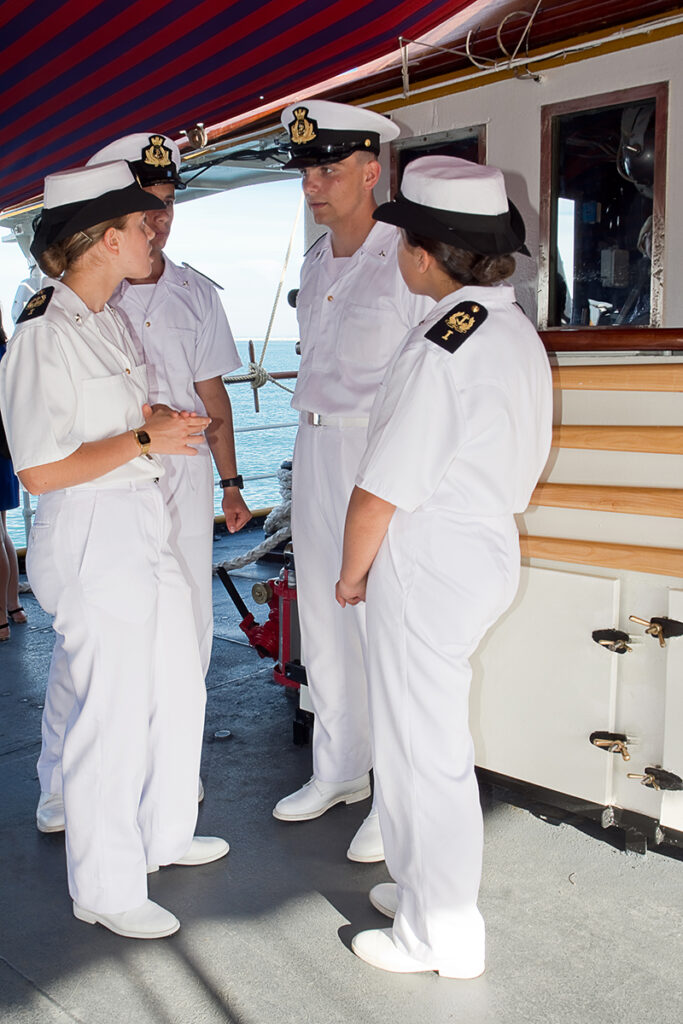NEEDED: a strategic approach to promote gender equality to ensure that women gain equal access to opportunities for advancement
By Deniece M. Aiken*
‘Shipping is as old as mankind’ is a popular adage that intrinsically reveals the true history and nature of the maritime sector.
Water transport dates back at least two millennia to a time when there was a need for overcoming geographical barriers in order to facilitate communication, as well as the movement of people and goods. Yet, notwithstanding its lengthy history, the shipping industry has traditionally been male dominated. This, according to various authors[1] is evidenced by the multiple masculine references in the language used within the industry, for example the adage mentioned here in the opening paragraph.
The inclusion of women in the maritime industry was once a farfetched idea. Women were generally restricted or refused the opportunity to take up seafaring careers. However, over time, women have entered the maritime workforce and have continuously demonstrated the importance and positive impact of their various contributions within the industry.
 The increase in the numbers of women in seafaring and onshore maritime careers only happened within the last few decades, as emergent programmes and initiatives were launched, implying a stark realisation of the vast under-representation of women in the sector. Noteworthy is the International Maritime Organization’s Programme for the Integration of Women in the Maritime Sector (“IMO Gender Programme”), launched in 1988. This programme demonstrates the IMO’s strategic approach to enhancing the contribution of women as key maritime stakeholders and its commitment to the United Nations Sustainable Development Goals, in particular SDG 5 (which speaks to achieving gender equality and empowering all women and girls). Between 1997 and 2004, the programme focused on global sensitization. And, since 2004, a number of regional associations of women maritime professionals were unveiled. The mission of these professional networks is to improve gender balance in the shipping industry.
The increase in the numbers of women in seafaring and onshore maritime careers only happened within the last few decades, as emergent programmes and initiatives were launched, implying a stark realisation of the vast under-representation of women in the sector. Noteworthy is the International Maritime Organization’s Programme for the Integration of Women in the Maritime Sector (“IMO Gender Programme”), launched in 1988. This programme demonstrates the IMO’s strategic approach to enhancing the contribution of women as key maritime stakeholders and its commitment to the United Nations Sustainable Development Goals, in particular SDG 5 (which speaks to achieving gender equality and empowering all women and girls). Between 1997 and 2004, the programme focused on global sensitization. And, since 2004, a number of regional associations of women maritime professionals were unveiled. The mission of these professional networks is to improve gender balance in the shipping industry.
To date, eight such Women in Maritime Associations (WIMAs) have been established: in Latin America (Red de Mujeres de Autoridades Marítimas de Latinoamérica); in the Caribbean (Women in Maritime Association, Caribbean); in the Pacific (Pacific Women in Maritime Association); in Asia (Women in Maritime Association, Asia);, and in Arab States (Arab Women in Maritime Association). WIMAs in Africa include: Network of Professional Women in the Maritime and Port Sectors for West and Central Africa; Association for Women in the Maritime Sector in Eastern and Southern Africa; and, Women in Maritime of West and Central Africa.
Kitada (2021) aptly outlined that IMO’s efforts extended beyond the facilitation of professional networks and further materialized through the Busan Declaration, which referred to the promotion of women seafarers around the world. Resolution 14 of IMO Regional Conference on the Development of a global Strategy for Women Seafarers, 2013 led to the adoption of the Manila Amendment of the International Convention on the Standards of Training, Certification and Watchkeeping for Seafarers (STCW), entitled the ‘Promotion of the participation of Women in the Maritime Industry’; and the further inclusion of provisions to ensure the conditions for shipboard facilities for women in the Maritime Labour Convention 2006.
As technological advancements continue and barriers to trade and investments regress, global economies and industries have become increasingly interconnected, resulting in a global marketplace characterized by intense competition, shifting priorities and opportunities. One such shifting priority is the securing of the best talent for competitive advantage in the global marketplace.
Knowledge and skills have become the currency of power in this epoch of the knowledge economy. It is a time said to be burdened by a talent shortage. Nevertheless, there seems to be little urgency to addressing this shortage from the untapped resource of gender diversity.
 Today, women are increasingly undertaking leadership roles, such as managing and organizing maritime educational institutions, holding executive positions in shipping companies, and even serving as top-level officials in maritime regulatory agencies. Since 2022, the IMO International Day for Women in Maritime is celebrated annually on the 18th of May to recognize the valuable contributions of women in the maritime industry and to advocate for equal opportunities for women in this field in alignment with the commitment to SDG 5. Nonetheless, despite the progress of overcoming the initial difficulty of breaking into a historically male-dominated field, the pace of opportunities for inclusivity and career advancement has yet reached the desired level of equitability. There needs to be a strategic approach to promote gender equality in the maritime industry and to ensure that women are given equitable opportunities for the advancement of careers in maritime.
Today, women are increasingly undertaking leadership roles, such as managing and organizing maritime educational institutions, holding executive positions in shipping companies, and even serving as top-level officials in maritime regulatory agencies. Since 2022, the IMO International Day for Women in Maritime is celebrated annually on the 18th of May to recognize the valuable contributions of women in the maritime industry and to advocate for equal opportunities for women in this field in alignment with the commitment to SDG 5. Nonetheless, despite the progress of overcoming the initial difficulty of breaking into a historically male-dominated field, the pace of opportunities for inclusivity and career advancement has yet reached the desired level of equitability. There needs to be a strategic approach to promote gender equality in the maritime industry and to ensure that women are given equitable opportunities for the advancement of careers in maritime.
The IMO-Women’s International Shipping & Trading Association’s Women in Maritime Survey 2021 reveal that less than 35% of the job functions in mid-management, core roles and support roles are held by women. This in an era when companies and industries are reporting difficulty in recruiting suitably skilled workers.
Qualified women entering the workforce consistently outnumber qualified men. Nonetheless, the presence of women with higher education is not evident by their numerical presence in the labour force, and particularly in academia or leadership roles.
Women generally have the ability to initiate change. This makes them an invaluable resource for organizations. Yet they are rarely present in the C-Suite among those with titles such as chairman, chief executive officer (CEO), chief operating officer (COO), chief financial officer (CFO), chief Human Resource officer (CHRO). Indeed, those who have successfully maneuvered the labyrinth of corporate hierarchy are still few.
Rarely seen
According to the BIMCO/ICS Seafarer Workforce Report 2021, women represent only 1.2% of the global seafarer workforce. This reflects a 45.8% increase as compared to the 2015 report. But it still it presents a woeful under-representation of women in shipping.
Many have pondered the underlying reasons for the minimal number of women in maritime industries. Why are there not more women in maritime?
Why are those within the industry not advancing in their careers when the utilisation of their talent and skills can readily help an organization to maximise its potential and accomplish strategic objectives?
It could be argued that a contributing factor is visibility, or lack thereof.
Women working at sea are rarely seen. Seafaring is still seen as a man’s job. When a ship comes alongside to dock, it is the men who are visibly in the majority handling cargo operations and maneuvering machinery on deck. Conversely, women are visibly present in shore-based professions. They are quite visible seen working on the ports, within the administrative block, in ship agencies and in shipping company offices. This suggests that, at least, a close-to-equal gender representation exists in shore-based maritime entities. However, the numbers state otherwise.
The IMO-WISTA Women in Maritime Survey 2021 revealed that women employed in shipping amounted to an overall 29%, with 20% employed in national maritime administrations. This is a far cry from the desired representation approximately 33 years after the initiation of the IMO Gender Programme.
Empowerment
Empowering of women requires provision of the support and resources needed to succeed.
Women’s successes are often underrated and recognized in fragments, especially within a male-dominated industry where women’s resources are often overlooked due to unconscious biases.
 Women need to be provided with opportunities for career advancement. Even in professions that are female dominated (such as nursing, social work, or elementary school education), men are promoted to supervisory and administrative positions more frequently than women. The sociocultural perpetuation of feminism in deflecting praise can contribute to this imbalance, subordinating their successes to their male counterparts. Women need to be empowered to develop a leadership identity. The absence of affirmation for women ultimately leads to diminished self-confidence for moving to the next career level. The loss of purpose is likely to occur in under-represented organizations, reinforcing entrenched beliefs that men will continuously hold positions of leadership and power. Women’s development efforts should be anchored in a sense of leadership purpose rather than how they are perceived.
Women need to be provided with opportunities for career advancement. Even in professions that are female dominated (such as nursing, social work, or elementary school education), men are promoted to supervisory and administrative positions more frequently than women. The sociocultural perpetuation of feminism in deflecting praise can contribute to this imbalance, subordinating their successes to their male counterparts. Women need to be empowered to develop a leadership identity. The absence of affirmation for women ultimately leads to diminished self-confidence for moving to the next career level. The loss of purpose is likely to occur in under-represented organizations, reinforcing entrenched beliefs that men will continuously hold positions of leadership and power. Women’s development efforts should be anchored in a sense of leadership purpose rather than how they are perceived.
Maritime industries must continue to strive for greater inclusion of women in all areas, from educational /training institutions to shipping companies and especially in top-level positions in both sea-going and shore-based professions.
The IMO and other networks continue to support the participation of women in the maritime sector. However, it may take radical repositioning to move women in maritime from ‘untapped resource’ to ‘key stakeholder’. []
- First published April 21, 2023.

*Deniece M. Aiken, BSc, LLB, MSC, (Maritime Law & Policy), member of the International Association of Marine Consultants and Surveyors, is an Attorney-at-Law with experience in maritime, corporate, labour and real estate laws and WMUKoji Sekimizu Fellow for Maritime Governance.
References
Kitada, Momoko & Carballo, Laura & Mejia, Maximo. (2019). Empowering women in the maritime community. WMU Journal of Maritime Affairs. 18. 525-530. 10.1007/s13437-019-00188-6.
Kitada, Momoko. (2021). Women Seafarers: An Analysis of Barriers to Their Employment. 10.1007/978-3-030-49825-2_6.
Pike, K., Wadsworth, E., Honebon, S., Broadhurst, E., Zhao, M., & Zhang, P. (2021). Gender in the maritime space: How can the experiences of women seafarers working in the UK shipping industry be improved? The Journal of Navigation, 74(6), 1238-1251. doi:10.1017/S0373463321000473
Zhang, P. and Zhao, M. (2015). Chinese women seafarers: Past, present and prospect. In: Kitada, M., Williams, E. and Froholdt, L. (eds.). Maritime Women: Global Leadership, Heidelberg: Springer, 235–254.
[1] Zhang and Zhao, 2015; Kitada, 2019; Pike et. al., 2021





